UNESCO World Heritage Sites Turkey
After the devastating earthquakes in south eastern Turkey in 2023, thousands of lives were lost and more changed, and innumerable damage done to individuals and places. It will take years for the people and the region to recover and one way you can help is by coming to visit the UNESCO World Heritage Sites Turkey. The country has a wealth of historical and archaeological treasures to see that are safe and open to visitors. 21 are inscribed on the UNESCO list. Here are some them*.
Istanbul Historical Peninsula
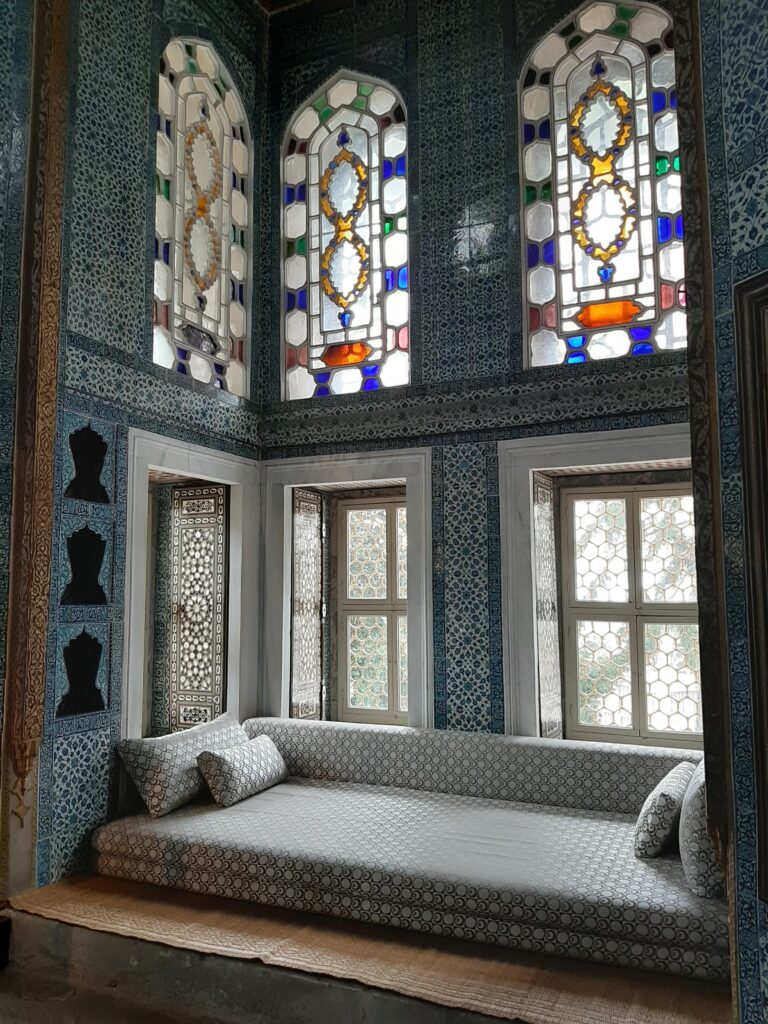
Naturally Istanbul has been recognised by UNESCO and as a long time resident of the city I am inordinately proud. The whole of the Historic Peninsula, surrounded by the Golden Horn (Haliç), the Bosphorus and the Marmara Sea, was inscribed on the list in 1985. That includes the 17th century Sultanahmet Camii (the Blue Mosque), the Sokollu Mehmet Pasha Mosque, the 15th century Topkapi Palace complex, the hippodrome of Constantine, the aqueduct of Valens, the Hagia Sophia and more. Once you’re finished there head over to Suleymaniye Mosque, wander the streets of Zeyrek then follow the remains of the city walls built initially by Theodosius in the early fifth century. That’s just for starters. Check out this UNESCO website for more information.
Nemrut Dağı (1987)
The first time I went to Nemrut Dağı was in 1990. I booked a spot on a tour and was picked up from my hotel in Kahta at 4am and driven up the mountain. It was pitch black when we arrived but suddenly a man wearing a bright yellow rain coat appeared out of nowhere. He solemnly welcomed us to Turkey and thanked us for visiting while the Gulf War was going on. Then he collected the entry fee. On my second visit I was travelling with around 50 university students, and we went at sunset. The minibus dropped us at the base of an artificial hill around 48 metres high, made of crushed rock. The mound is the mausoleum of pre-Roman King Antiochus I Theos (69–34 BC) who reigned over Commagene, a kingdom founded north of Syria and the Euphrates. His body and those of some of his relatives are believed to be buried inside it but no one is certain. Originally 9 metre tall statues of the King sat atop the mound, circled by seated Greek, Armenian and Iranian statues of gods, with the name of each one inscribed on them. Antiochus believed these gods were his relatives and he had them commissioned to form part of his legacy. Now their 6ft high heads are scattered across the flat ground. Elsewhere on the terrace a large slab carved with a lion shows the arrangement of the stars and the planets Jupiter, Mercury and Mars on 7 July 62 BC. Archaeologists believe this is the date construction began on this monument. Luckily the heads weren’t damaged in the recent quakes.
Archaeological Site of Ani (2016) – Kars
I went to the ruined city of Ani back in 2001 when you had to lodge your passport with the local police the day before to get permission. There was only one man to take you out to the site at the time, and he drove a trusty low slung Station Wagon. Those details have stayed in my mind because I remember listening to the engine closely as we were chased part of the way by two huge ferocious looking kangals wearing collars with heavy metal spikes. It seemed an age until they turned away and went after more likely prey.
Our driver dropped us at the entry where there was a big sign warning people not to take photographs of Armenia. Once inside we set off over the lush green fields towards what was the capital of the medieval Armenian Bagratide Kindom in the 10th and 11th centuries. It combined homes, churches and military structures and grew wealthy as a branch of the Silk Road. Ani was often called the “City of 1001 Churches” and although the real number was much less, to date a total of around 100 churches, cave chapels and freestanding chapels have been excavated.
In the following centuries the Byzantines, Seljuks and Georgians took control of the city, but it remained an important stopover for merchant caravans. The atmosphere of the city must have been wonderul, with a mix of Christian and Muslim influences, but today only a handful of buildings remain. The decline of the city started with a Mongol invasion in the early 13th century followed by a massive earthquake about 100 years later, in 1319.
Kim and I walked the length and breadth of the site and then sat on the broad stone windowsills of a once grand church overlooking the ravine that forms a border with Armenia. All we could see, apart from a military lookout, was miles and miles of green.
Bursa and Cumalıkızık
Bursa and the nearby village of Cumalıkızık were inscribed on the list in 2014, but I went there well before then. One of my students at the time, Volkan, had an uncle who offered to show us the sites. This consisted of being shown through Ulu Camii and various hans at warp speed, before heading up to Uludağ for a mangal, the Turkish version of a BBQ. The mountainside was dotted with mangal evi, restaurants set in gardens where you chose your meat from a list and then grill it yourself. Volkan’s uncle was set on having tea with the meal, but for some reason no one was serving any. The hungrier he got the faster he drove, making for a nail biting drive back down to the city where we ate Iskender Kebab and drank, you guessed it, a lot of tea.
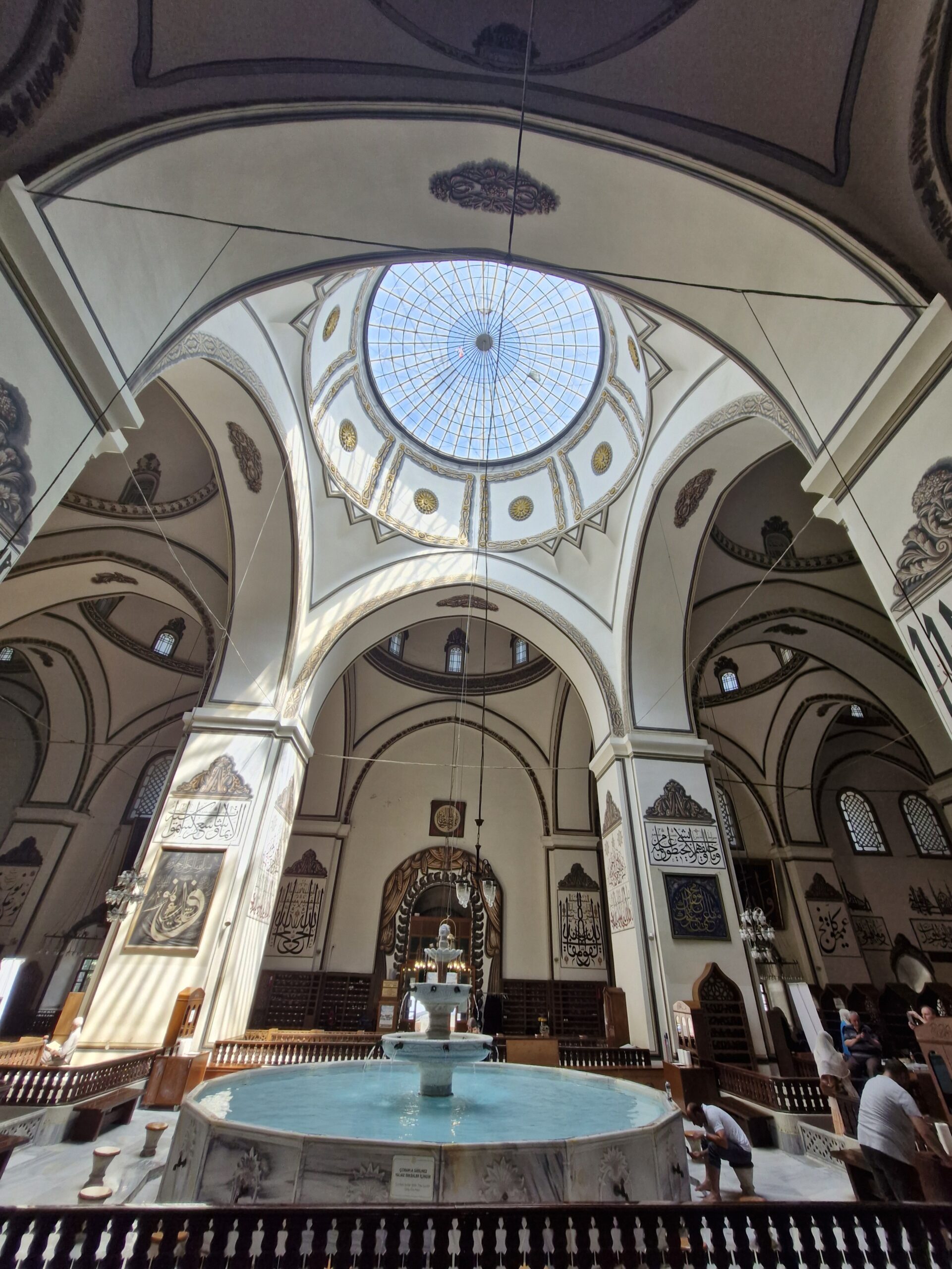
In March 2020 I had tickets for the BUDO ferry to Mudanya from where I planned to catch a bus to Bursa to see what I missed last time, which was just about everything really. Then Istanbul shut down one day before my departure date due to COVID being detected in Turkey and I realised I wouldn’t be going anywhere any time soon.
I’m still to visit Cumalıkızık, a 700 year old village founded by the Ottomans. It’s one of seven kızık in the area. Kızık refers to the narrow valleys in which the villages are built. The narrow, irregular flagstone streets of Cumalikızık contain superb examples of Ottoman two and three storey houses crammed together at odd angles. Some streets, like Cınarlığı Sokak are so narrow, only one person can pass at a time.
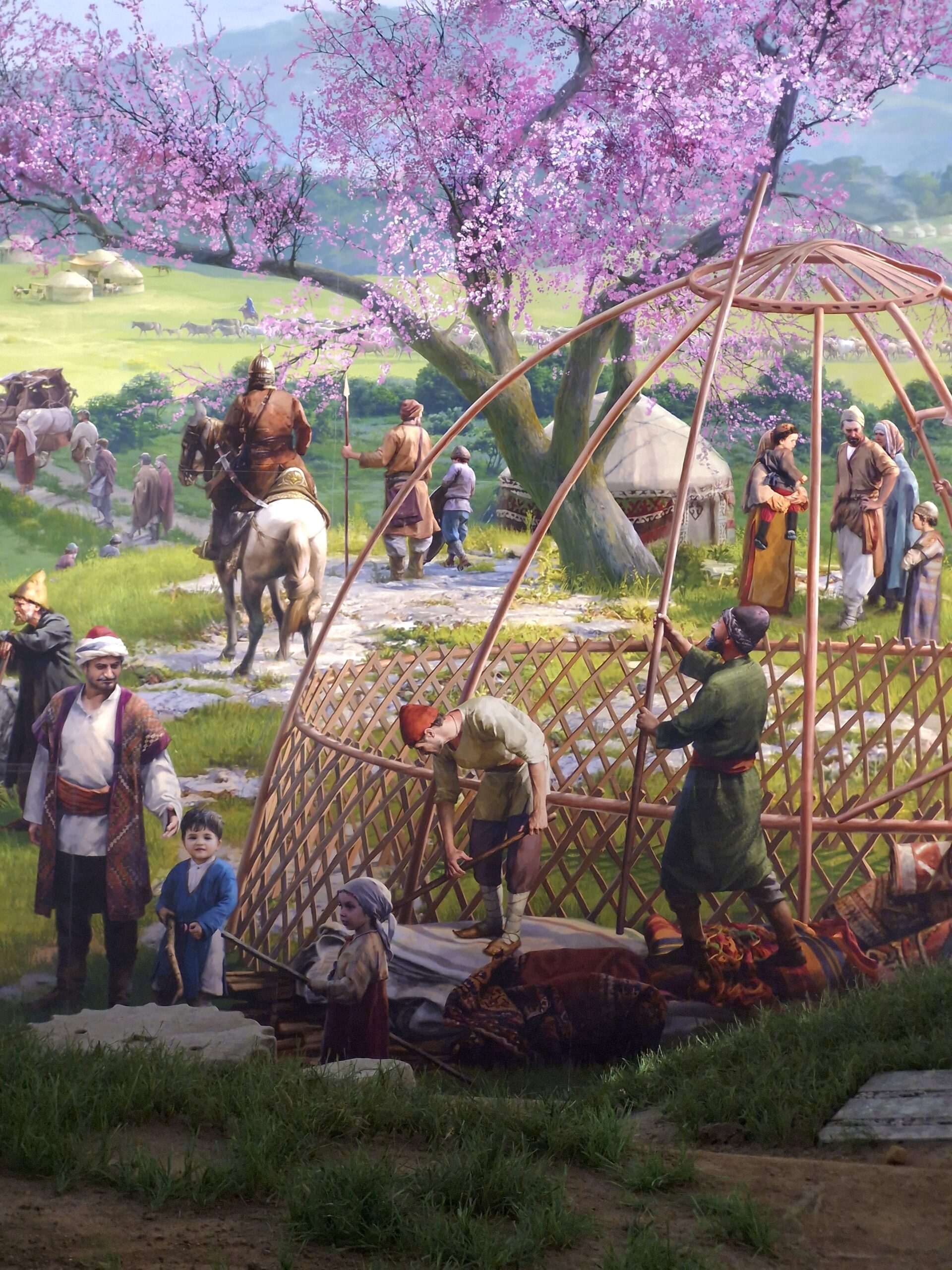
However I did finally return to Bursa, and this time I got to see all the major sites. In the 14th century Bursa was the first capital of the Ottomans and the founder of the empire, Osman Gazi (1258-1326) is buried in a spot overlooking the town. His tomb is opposite that of his son Orhan Gazi. Ulu Camii, the Grand Mosque of Bursa is very close to Bursa’s very own mini bazaar based on the grand one in Istanbul . You’ll find plenty of shops to check out but look out for Koza Han. Built in 1491 by Beyazid II as the centre for city’s silk industry, it has two floors of stores selling silk scarves and tea houses in the courtyard where you can sit and enjoy a tea or other refreshing traditional Turkish drinks.
I’m not usually a fan of panorama’s but the Bursa Fetih Müzesi 1326 is mind-blowing good. Even with what felt like a million noisy teenagers inside it.
Göreme National Park and the Rock Sites of Cappadocia
Göreme was one of the first places I spent any length of time when I came to Turkey, and it will always have a special place in my heart.I first saw the arid plains of Cappadocia in 1990, five years after it was inscribed on the UNESCO list, three decades after Maria Callas and the cast of Medusa scandalised the locals with their scanty costumes and less than twenty years after Hollywood heartthrob and my favourite Tarzan, Johnny Weissmuller, paid a visit.
I lived there for two months when Göreme was still a village with a population of less than 2000 people. Twelve years later I worked in Kayseri, only an hour and a half away by bus. For the two years I taught at the local university I spent every other weekend travelling to visit my friends in Göreme, then classed as a kasabağ, its population somewhere between a village and a town. Now it’s grown beyond my recognition, with Chinese restaurants, luxury hotels and dozens of hot air balloons floating across the early dawn skies.
Yet the spectacular landscape, the foundations laid by volcanic eruptions and then sculpted by wind and rain, remains just as mesmerising as my first glimpse from a bus driving down into the valley from Neveşehir. The sun had just started to rise and my awe was as innocent as that of the little girl, also a passenger on the bus, aged five or six, urgently shaking her father awake so he could share in the wonder of the view. Whenever you decide to visit, be it winter or at other times of the year , Cappadocia takes your breath away
Pergamon – Bergama
Pergamon was inscribed onto the UNESCO World Heritage Sites Turkey list in 2014, as much for its historical past as for the remains of this once grand city stretched across a hillside above Bakirçay Plain 25 kilometres inland from the Aegean Sea. It was the capital of the Hellinistic Attalid dynasty who ruled it autonomously from 263BC until 133BC when it was gifted to the kingdom of Rome. The Attalid’s built a fortress and palace on the peak of the hill, while the town was on the lower slopes where modern day Bergama now sits.
When the Romans took the reins the town was located on the plain. At the height of Attalid power, Pergammon contained a mix of monumental temples, a library, theatres, gymnasium, altars and even a racetrack, all ringed by a formidable city wall. Today only marvellous tiers of stone seats cascade down the steep slope towards the stage. Once Rome fell the Byzantines ruled until the Ottomans took over Pergammon in the 14th century. Today artefacts and sculptures, bas reliefs and complete structures excavated in Pergammon that started in 1878 are held in the museum of the same name in Berlin, closed since late 2023 for renovations expected to take more than ten years.
Ephesus (2015) – Selçuk
Although landlocked now, Ephesus was originally a port city located in an estuary of the Kaystros River. Legend dates it to the 11th century BC when Ionian prince Androclos was searching for a new Greek settlement. Before choosing a spot he asked advice from the oracles of Delphi as was the custom. They told him a fish and boar would show him the right place. Some time later, when Androcles was frying a fish, it flipped out of the pan and landed in a nearby bush, scattering the coals in the process. A spark ignited the shrubbery and a wild boar ran out into the open. Recalling the oracles’ words, Androcles founded the city of Ephesus on the spot. According to another tale, the city is named for Ephesia, queen of the Amazons.
Whatever the truth, for centuries Ephesus was an important trading centre in the Mediterranean, ruled in turn by Greeks and Romans, as well as being a site of early Christian evangelism. Ephesus was added to the UNESCO World Heritage Sites Turkey list in 2015 and excavations are ongoing. To date they’ve revealed the Roman Imperial Library of Celsus, the Marble Way and the Great Theatre, but unfortunately the only remains of the famous Temple of Artemis, recorded as one of the Seven Wonders of the World, are on display in the British Museum. However, you can walk through ordinary suburban Roman houses complete with floor mosaics in situ.
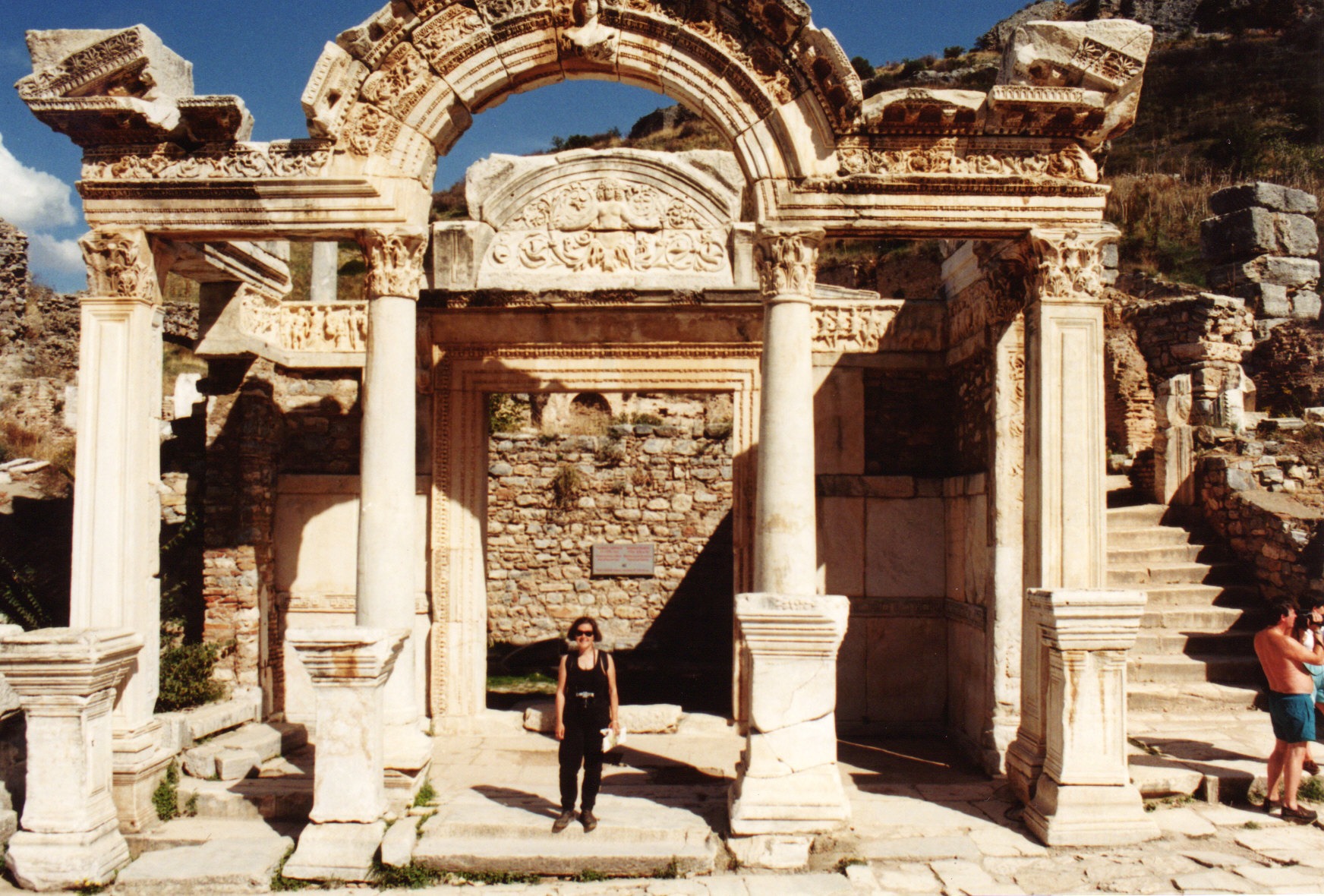
There are plans afoot to reconnect Ephesus to the sea but until that day comes, most people choose to base themselves in the nearby city of Selçuk and visit from there. It has a pretty old town centre and the museum is well worth a look. It houses numerous artefacts discovered in Ephesus and really helps you get a good picture of what life in the city was like in ancient times.
I am sure many of you have far better photos of Ephesus than I do so but I want to leave you with these two, both from 1996.
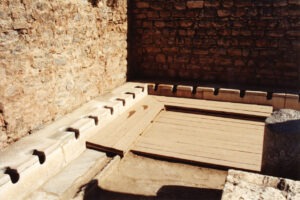
One photo shows me with the roses I received from an ancient man who offered to marry me after learning Kim and I had been going out for 5 years but not made it formal, and the second is of the famous toilets in Ephesus. Hear all about the interesting conversation I had about squat toilets and how to use them with an English woman I met in the tourist toilet facilities in Ephesus back then, on this podcast. For some reason when I went there with my Dad in 2007 I didn’t take any pictures. Probably because I was busy chasing after him to make sure he didn’t wander off and get lost. He tended to do that when history captured his imagination (read more in “You are my sunshine” in Exploring Turkish Landscapes.
Hierapolis-Pamukkale (1988) – Denizli
The first time I went to Pamukkale, two years after it joined other UNESCO World Heritage Sites Turkey, there were dozens of ponds formed from calcite laden water on cliffs 200 metres high. I lay in the thermal waters of one of them with Muckie, a Dutch guy I’d been travelling with. A small town in the valley below formed the backdrop. Fast forward to 2001 and there were fewer ponds to see, the ugly concrete building I’d stayed in had been half knocked down and the plains looked like a green and cream agricultural quilt. It was lusher than before because the water was once again flowing freely downstream rather than being redirected through unlicensed hotels. At that time the Cleopatra Antique Pools were full to the brim with corpulent German tourists but nonetheless it was thrilling to glide over pieces of columns that dated back who knows how many centuries.
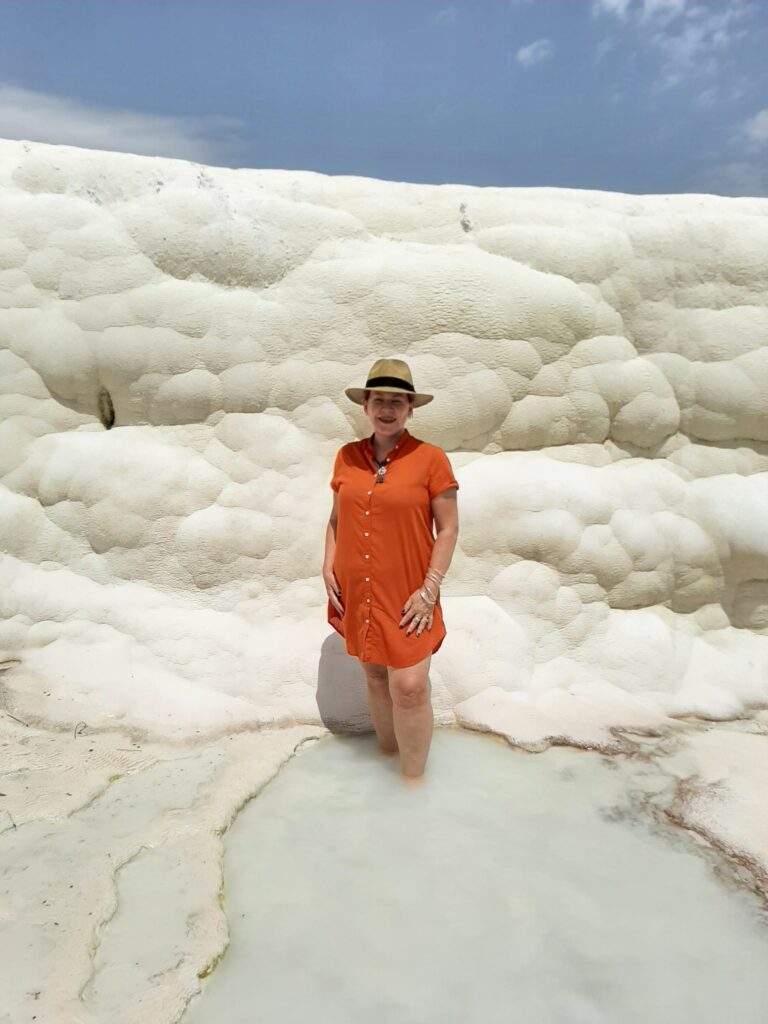
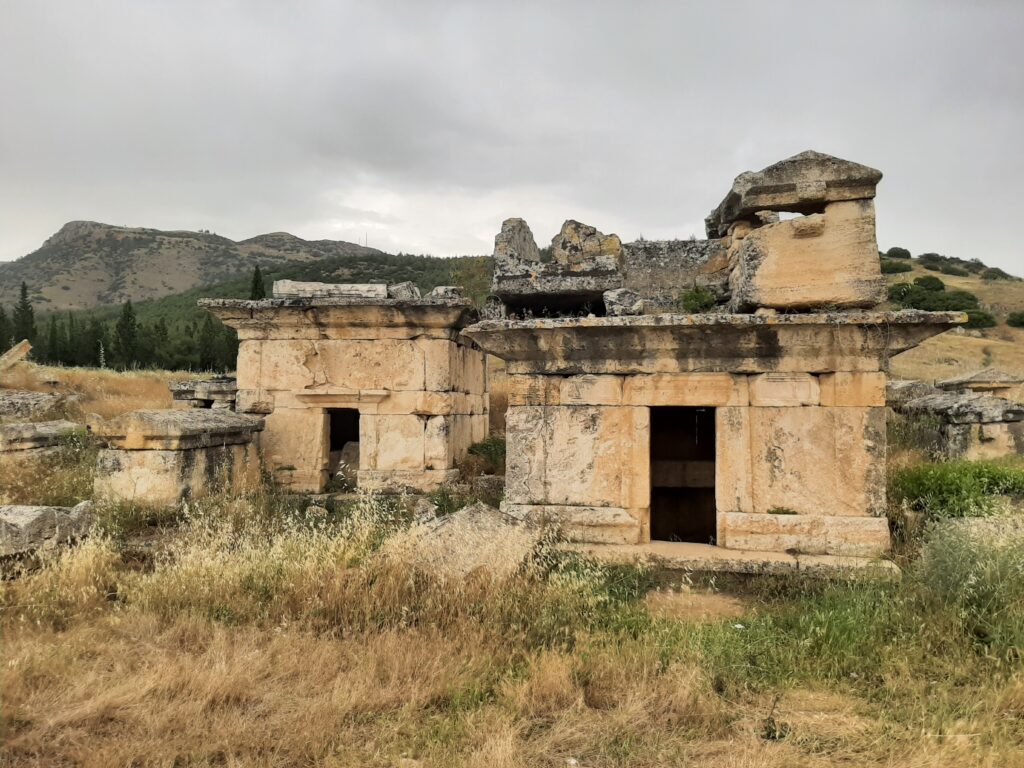
Even though the limestone travertines of Pamukkale, or Cotton Palace as it comes out in English, are the main attraction, I was drawn to Heirapolis. Established as a spa town by the Attalids at the end of the 2nd century, there are remains of a theatre, baths and other monuments scattered across a considerable area. Between the 4th and 6th centuries Christians erected a cathedral, baptistery and various churches, the Martyrium of Saint Philip being the most important.
City of Safranbolu (1994)
From the 13th century to the advent of the railway in the early 20th century, Safranbolu was an important caravan stop on the east-West trade route. The town is believed to date back as far as 3000BC and takes its name from saffron, the flower that produces the spice of the name, native to the region. Today Safranbolu is mainly famous for its architecture. The streets are filled with picturesque wooden houses reflecting Turkish social life in the 18th and 19th centuries. In the past the two and three storey structures were home to multigenerational families in their six to nine rooms. Large windows with wide sills let in plenty of light, and the interiors often have beautifully carved woodwork cupboards and ceilings
When we visited we stayed in one of these traditional konak in the old part of town and I remember we paid around 30TL without breakfast. It was a huge sum for us back then, being around AU$30 a night. Our more recent connection to the city was our moody kapıcı Kamil who came with our original apartment block in Istanbul (you can read more about him in “Rising to the Challenge” in Longing for Istanbul ). He was born in Safronbolu and once, in a moment of generosity, gave us a box of Safronbolu lokum. As well as eating this sweet treat some of the things you can do in Safronbolu are get clean at the Cinci Hoca Hamam, explore the Cinci Kervansaray, pick up some copper at the Demirciler Arastası or buy leather goods from the Yemeniciler Arastası, visit the Köprülü Mehmet Paşa and Izzet Paşa mosques or just wander the streets and imagine yourself back in time.
Selimiye Mosque and its Social Complex (2011) – Edirne
This is another ‘to visit’ place on my neverending list of places to visit in Turkey. I know the famous architect Mimar Sinan considered the 16th-century Selimiye Mosque his best work, but somehow I always end up going other places first. Built in the centre of the city, it has a large central dome and four minarets. Its elegant grandeur befits this former Ottoman capital and the interior is decorated with sublime Iznik tiles produced at the height of their production, when tiles were works of art not mere ceramic squares. The mosque is the focal point of a külliye, social complexed perfected during the Ottoman Empire. Traditionally they’re made up of a medrese (Koran school), arasta or covered marker, clock house, library and outer courtyard all managed as a single institution. It’s understandably a worthy entry on the UNESCO World Heritage Sites Turkey list.
Göbekli Tepe (2018)
Göbeklitepe is located in the Germuş mountains of south-eastern Anatolia, near the south east Turkey city of Şanliurfa. This archaeological site contains evidence of human settlement dating back some 11,5000 years. That’s 6000 years before Stonehenge was built. The sprawling dig is ongoing and a sophisticated visitor centre has been built around the site enabling you to see the layout of the city and comprehend how it all began. These monuments were probably used in connection with rituals, most likely of a funerary nature. Distinctive T-shaped pillars are carved with images of wild animals, providing insight into the way of life and beliefs of people living in Upper Mesopotamia about 11,500 years ago.
In Şanliurfa itself, the archaeology museum displays finds from Göbeklitepe as well as Assyrian, Babylonian and Hittite artefacts. The adjacent mosaic museum contains specimens from an ancient Roman villa known as the Villa of the Amazons due to a mosaic showing Amazon queens hunting found at the site. The mosaics were discovered during work on the sewerage system for the museum, an extraordinarily lucky find.
Like many cities in the southeast of Turkey, Şanliurfa was effected by the earthquakes that struck on February 6 and 7, 2023. Newer buildings in the city were damaged and at the time of posting this, the Archaological Museum was closed. Göbeklitepe was not affected but I do not recommend you visit the area until the government reopens the museum, slated for some time in April (note this could change). Even then, although I’ve read reports daily life in Şanliurfa is getting back to normal, many people have lost their loved ones and homes so you might be wiser to postpone any plans, That said, do keep it on your list as tourist dollars will also help with recovery.
Other sites and places on the UNESCO World Heritage Sites Turkey list are;
Great Mosque and Hospital of Divriği (1985)
Hattusha: the Hittite Capital(1986)
Xanthos-Letoon(1988)
Archaeological Site of Troy(1998)
Neolithic Site of Çatalhöyük (2012)
Diyarbakır Fortress and Hevsel Gardens Cultural Landscape (2015)
Aphrodisias (2017)
Aslantepe Mound (2021)
*********************************
Now you have the information it’s time to get planning your trip to Turkey. Here are my helpful tips;
For FLIGHTS I like to use Kiwi.com.
Don’t pay extra for an E-VISA. Here’s my post on everything to know before you take off.
However E-SIM are the way to go to stay connected with a local phone number and mobile data on the go. Airalo is easy to use and affordable.
Even if I never claim on it, I always take out TRAVEL INSURANCE. I recommend Visitors Coverage.
I’m a big advocate of public transport, but know it’s not suitable for everyone all the time. When I need to be picked up from or get to Istanbul Airport or Sabiha Gokcen Airport, I use one of these GetYourGuide website AIRPORT TRANSFERS.
ACCOMMODATION: When I want to find a place to stay I use Booking.com.
CITY TOURS & DAY TRIPS: Let me guide you around Kadikoy with my audio walking tour Stepping back through Chalcedon or venture further afield with my bespoke guidebook Istanbul 50 Unsung Places. I know you’ll love visiting the lesser-known sites I’ve included. It’s based on using public transport as much as possible so you won’t be adding too much to your carbon footprint. Then read about what you’ve seen and experienced in my three essay collections and memoir about moving to Istanbul permanently.
Browse the GetYourGuide website or Viator to find even more ways to experience Istanbul and Turkey with food tours, visits to the old city, evening Bosphorus cruises and more!
However you travel, stay safe and have fun! Iyi yolculuklar.
*********************************
*Unless stated in the text, the date next to each entry is the year the site was inscribed on the UNESCO World Heritage List. Also, please be kind when you see my photos. Some of them aren’t crystal clear because they’re from 20 or more years ago. Hmm, that’s a good reason for me to revisit places, isn’t it?
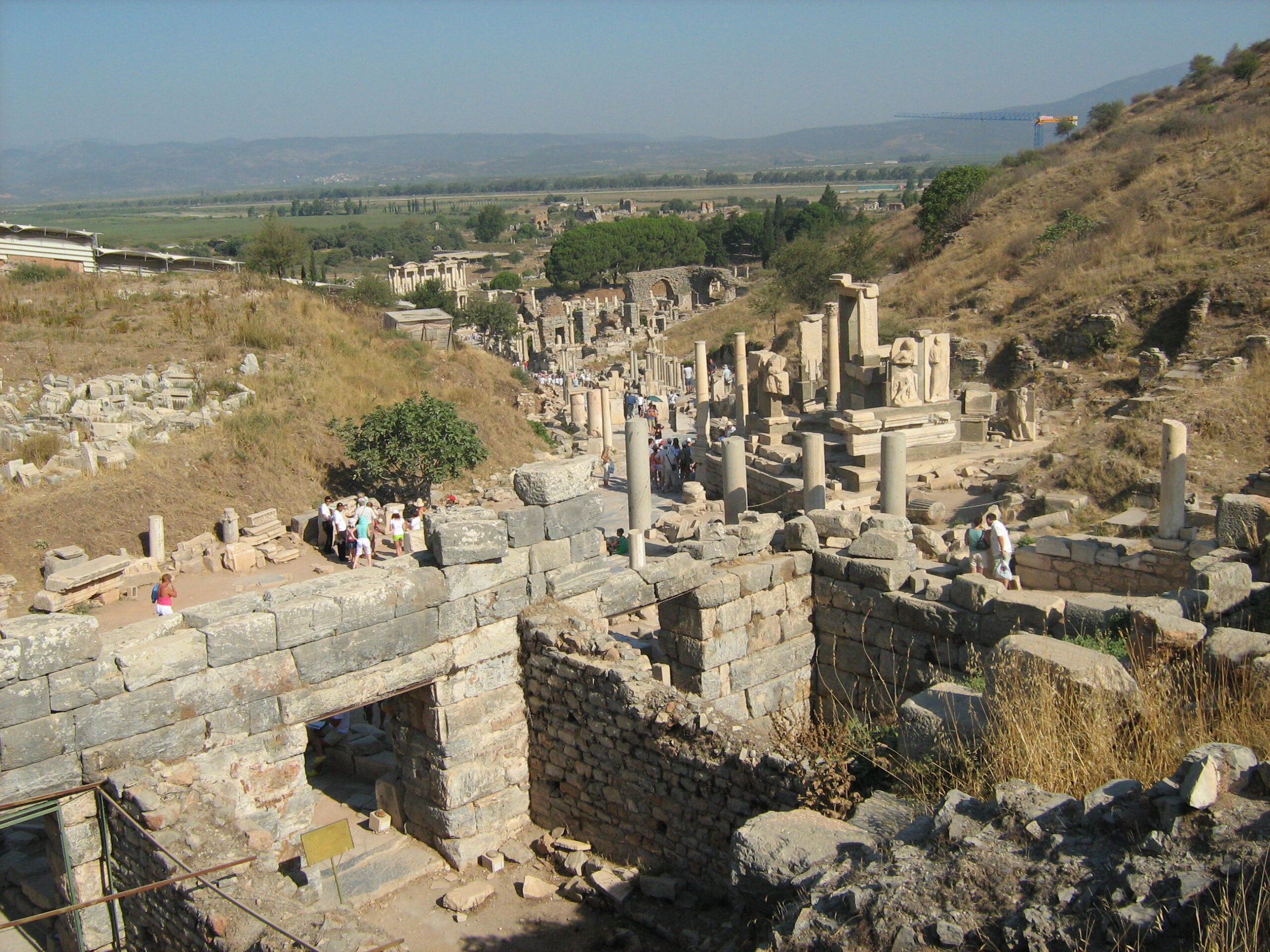
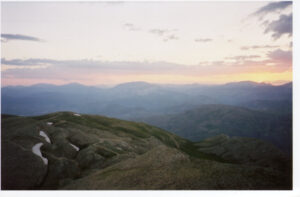
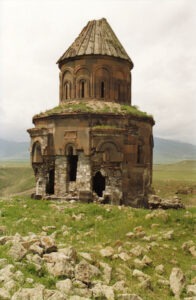
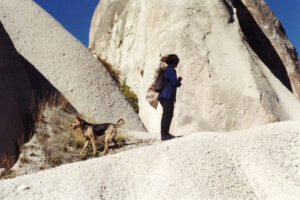
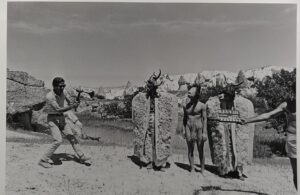
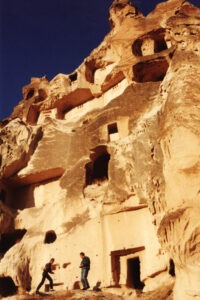
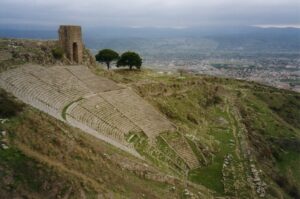
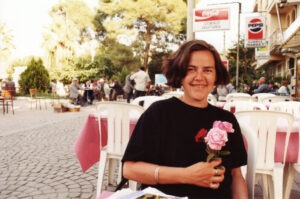
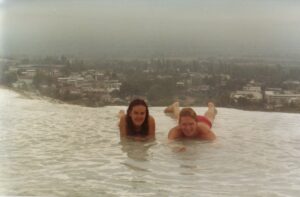
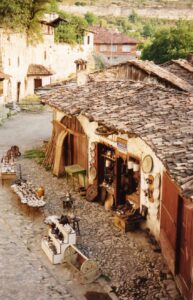
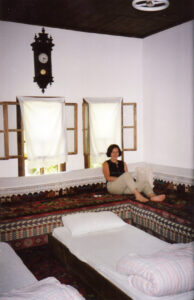
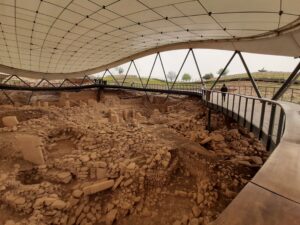
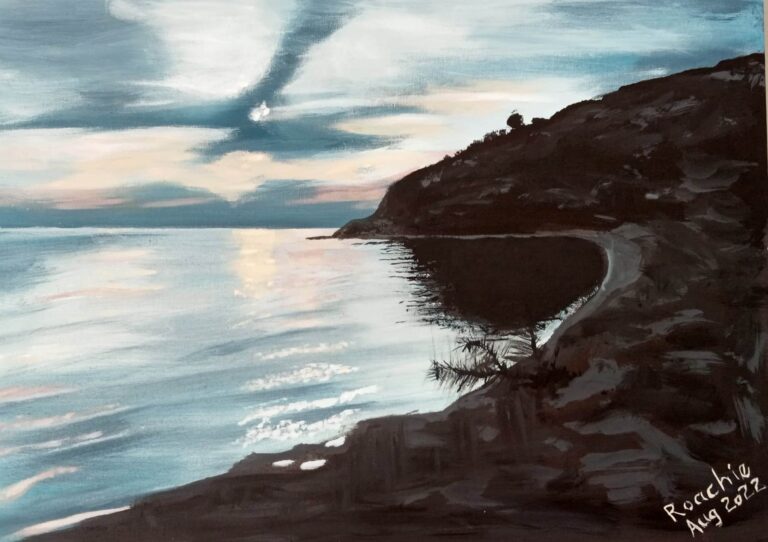
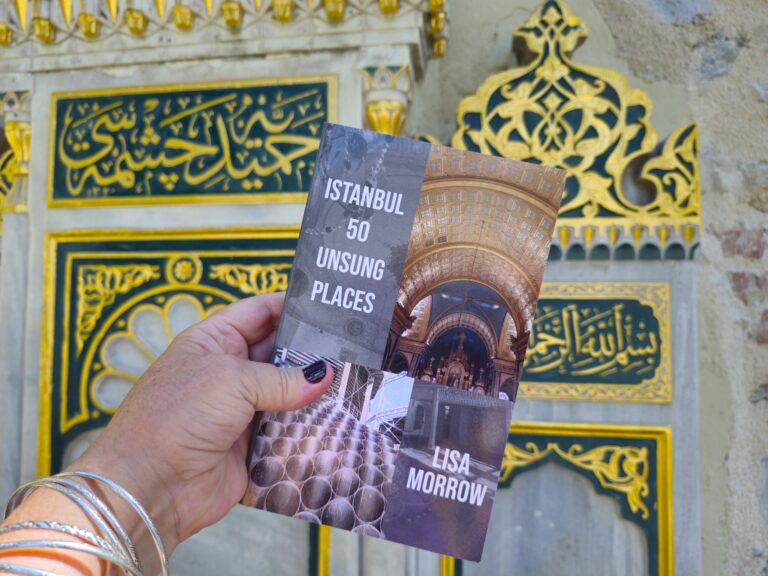
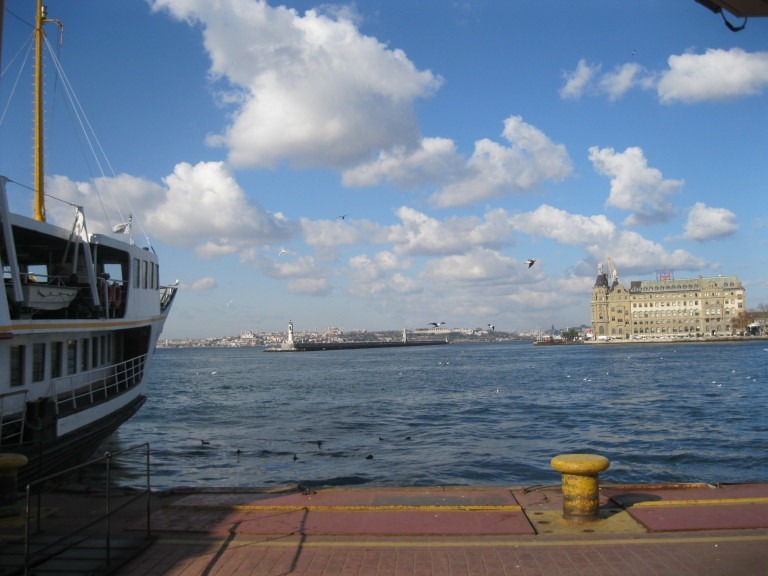
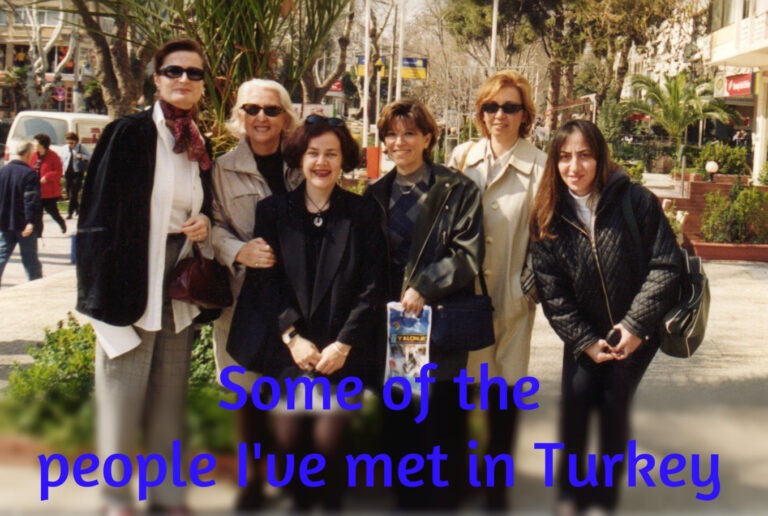
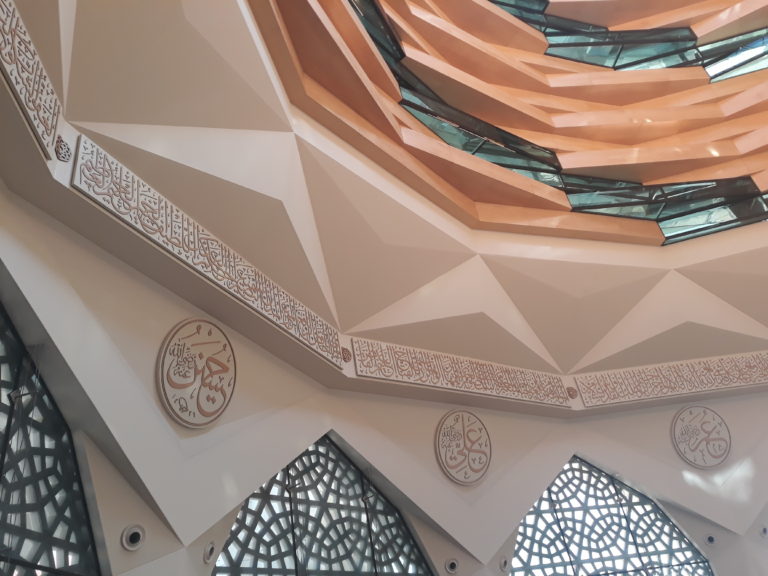
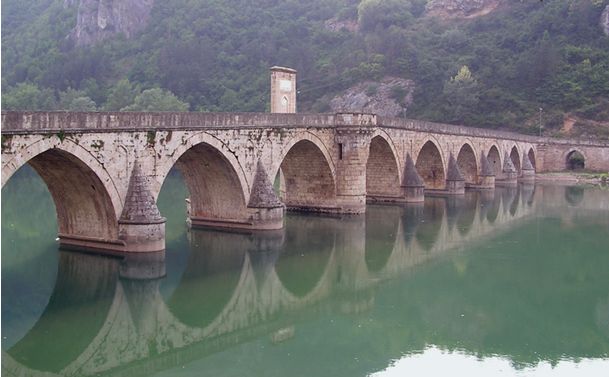
Ephesus brings back memories too for me who visited many years ago , and pammukale too , it was so quiet and white then , I love your stories
Like you I have a lot of memories of wonderful trips through Turkey. I still love travelling around but miss drinking tea sitting on low stools in tea houses full of old men staring at me because they’ve never seen a foreigner, let alone a blue eyed woman, up close. Or travelling on slow packed minibuses full of farmers with few teeth and wide smiles. It’s lovely to hear you enjoy my stories and enjoyed this post, because I have a new book coming out soon I think you’ll like. I certainly hope so.
Thanks for this Lisa, once again I’ve learned a great deal. I was glad to recently read that the heads at Nemrut had not been damaged. It was also hertenting to read that Göbekli Tepe may be open soon (although I read yesterday that they have been floods in that area, due to heavy rain, not sure now if they affect Sanilurfa?
Locally therecurrenlty is not much advice from travel agents. Isuspect that they are busy rearranging their plans.
{I hope to travel more this year, having moved twice again in the past 9 months (once in Turkiye and once in Scotland). I will later have more freedom than I have had.}
I think you’re right about local travel agents. It’s hard to plan for the future when no one knows what’s going to happen next. However shouldn’t stop people making plans so I’m glad to hear you’ll have more time to travel in the new future. Hope all is well down your way. I thought you were in your Turkish forever home.
Things are ticking along thanks. I see it was last February since we were in touch. A great mny things have changed since then, for the better.
That’s good to hear. Hope life continues that way for you.